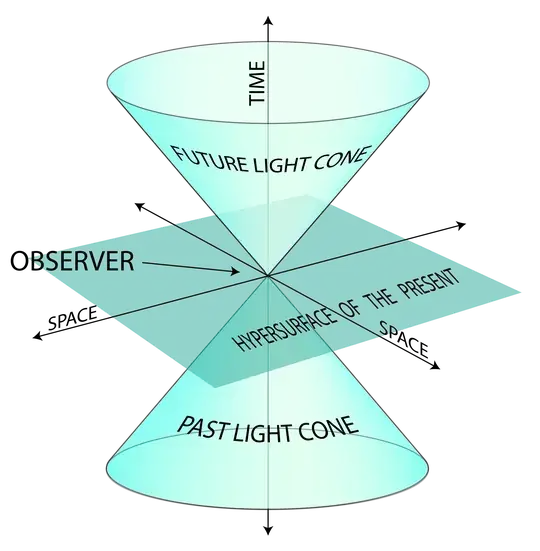Yes, in classical physics, space and time were fundamental, but they were separate.
Now, we know that the two are inextricably tangled. We cannot see spacetime, but we can feel the curvature of spacetime in the form of gravity, and we can see the effects of spacetime. Think about wind. We cannot see it, but we can see and feel its effects. Spacetime is sort of the same. We can predict what it will do when we plop mass into the middle of it, or we accelerate to near light speed within it; we can see how the Earth orbits around the sun and the Moon around the Earth; we can "feel" gravity pulling us down onto Earth, but we cannot see spacetime.
Photons, and light, are just as affected by spacetime as we are. A photon can be sucked into a black hole, and bent by the gravity of a massive object - this has been proven. A photon feels the effects of spacetime. Spacetime is also not an illusion. Its effects have been measured time and time again. General relativity is a rock solid theory that has predicted many things correctly. We may come up with a better theory that explains more phenomena, but the phenomena general relativity does explain, it explains well.
Light cones are the possible tracks light can follow - through spacetime. Light cones are not more fundamental than spacetime. Now, for your question about derived quantities and whether or not spacetime is fundamental (thanks for the clarifying comment). Take a diagram of a light cone.

The point in the middle is a specific event. Let's say it's you pressing the button to start the microwave. That very moment you press the button, that's the event. Now, the photons that were present at that event have a limited number of choices where they could go that first second after the event. A light cone is kind of like a graph. One second after the event is up a little bit after the event. And it isn't that wide, because there aren't to many choices. But, if you fast forward a year, say, those photons are probably pretty far away, or they could be at the same spot - the light cone is much wider. If you go a second before the event, there are a limited number of spots the photons could be to reach the event properly. A year before the event, there are many places those photons could be. That's why it looks like an hourglass.
Now, the light cone is located within spacetime. And there is spacetime outside of the light cone, and there are many light cones (one for every event ever). So there is light outside of light cones. A photon can travel between light cones if the light cones overlap, and therefore end up a ways away from the original light cone, if that makes sense. Spacetime is more fundamental than a light cone, because light cones make sense only within spacetime.
Hope this helps.
